How to Socialize Cats With Each Other After a Fight
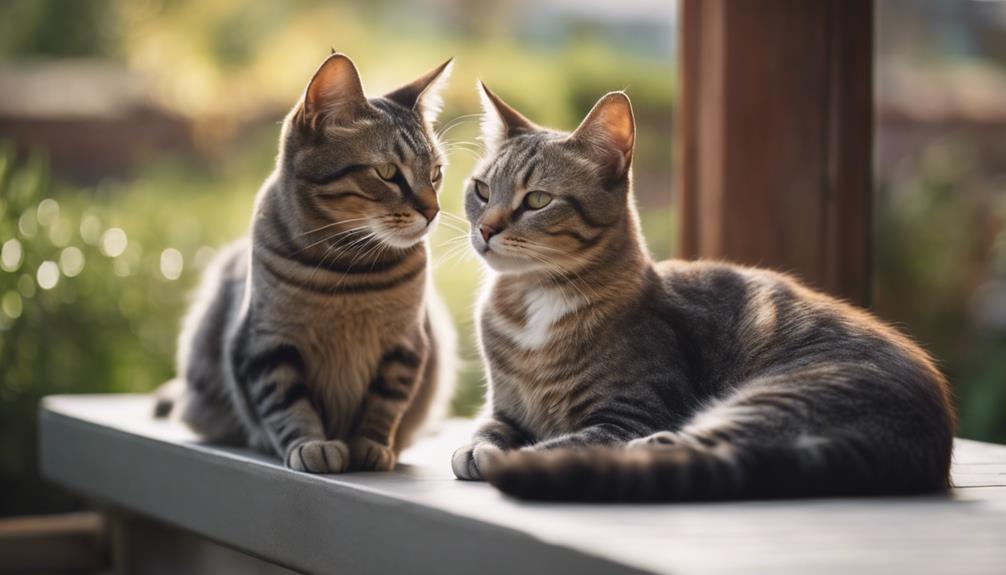
When socializing cats after a fight, it is important to reintroduce them gradually. Start by separating the cats in different rooms and allow them to adjust to their individual spaces. Slowly swap their scents by using a cloth or towel and placing it in the other cat's room. This helps them get acquainted with each other's smell without direct contact.
Next, you can try feeding them on opposite sides of a closed door. This way, they associate positive experiences, like mealtime, with each other's presence. Over time, you can start to crack the door open slightly during feeding sessions, allowing them to see each other while still feeling safe.
It's crucial to observe their body language during these interactions. If either cat shows signs of aggression or fear, separate them again and go back a step in the reintroduction process. Remember, patience is key when socializing cats after a fight. Rushing the process can lead to more conflicts. With time and consistent effort, most cats can learn to coexist peacefully.
Understanding the Root of the Conflict
To mend a rift between cats after a fight, it's essential to delve into the underlying reasons behind their conflict. Behavior analysis is crucial in understanding what triggered the altercation. By observing their actions and reactions leading up to the fight, one can identify patterns or triggers that may have caused tension between the cats. It's important to pay attention to body language, vocalizations, and any changes in their environment that may have contributed to the conflict.
A communication breakdown often plays a significant role in cat conflicts. Cats communicate through various means such as body language, vocalizations, and scent marking. Misinterpretation of these signals can lead to misunderstandings and ultimately fights. By understanding how cats communicate and recognizing signs of distress or discomfort, one can intervene before conflicts escalate.
Providing Separate Safe Spaces
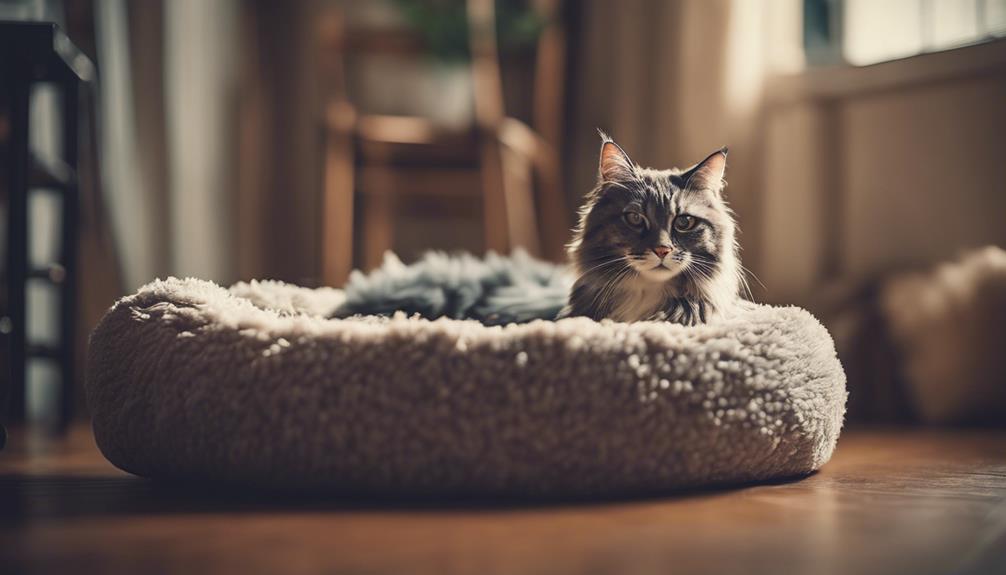
Understanding the importance of providing separate safe spaces is crucial in helping cats recover from a fight and rebuild their sense of security and comfort. Creating boundaries and building trust between the cats is essential for a harmonious living environment. Here are four practical tips to help you provide separate safe spaces for your cats:
- Individual Retreats: Ensure each cat has its own designated area where they can retreat to when they need space or time alone.
- Vertical Space: Cats feel secure when they can perch up high. Provide vertical spaces like cat trees or shelves to give each cat a safe vantage point.
- Multiple Resources: Avoid competition by providing multiple feeding stations, water bowls, litter boxes, and toys in different areas of the house.
- Rotate Access: Consider rotating each cat's access to different parts of the house to prevent territorial disputes and allow each cat to explore without feeling threatened.
Gradual Reintroduction Techniques
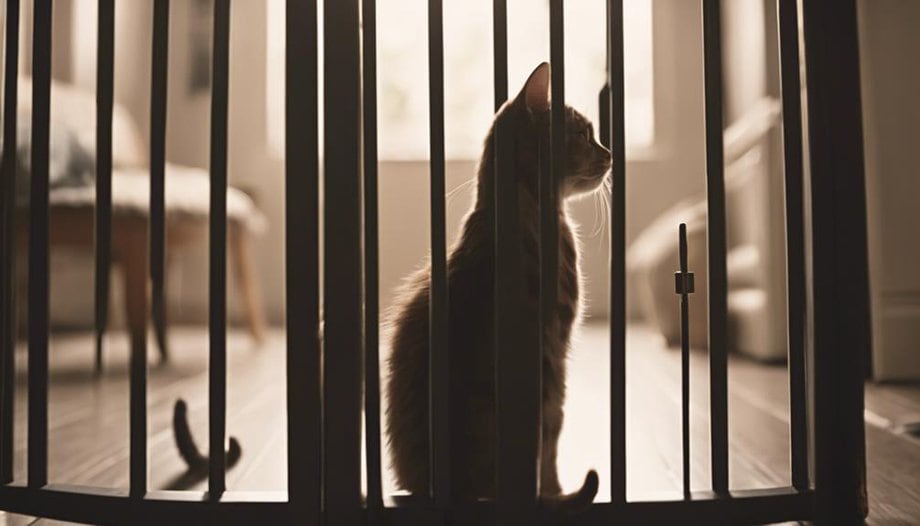
When reintroducing cats after a fight, gradually introduce them to each other using controlled interactions in a neutral environment. Feline behavior experts recommend a step-by-step approach to help cats resolve conflicts and rebuild their relationship. By using gradual reintroduction techniques, you can create a safe space for your cats to interact positively. Here's a practical guide to help you navigate through this process:
| Steps | Description | Purpose |
|---|---|---|
| Initial Separation | Keep the cats in separate rooms for a few days to reduce tension and allow them to calm down. | Establish a sense of safety before reintroduction. |
| Scent Exchange | Swap bedding or toys between the cats to help them become familiar with each other's scent. | Facilitate recognition and acceptance through scent. |
| Supervised Meetings | Gradually introduce the cats in short, supervised sessions, rewarding calm behavior with treats. | Promote positive interactions and reinforce good behavior. |
Implementing Positive Reinforcement
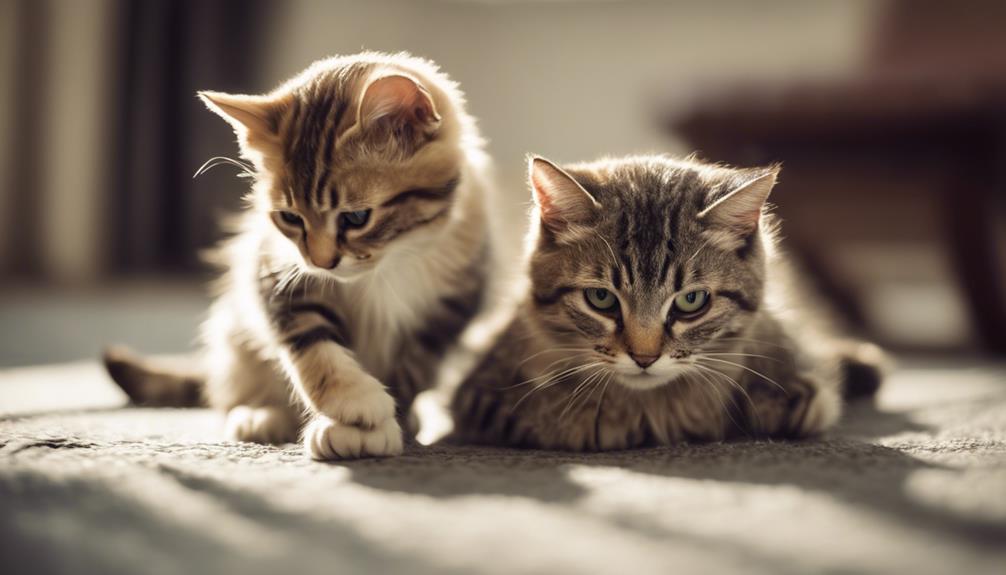
When working on socializing cats after a fight, implementing positive reinforcement can be a game-changer.
By rewarding good behavior and encouraging peaceful interactions, cats can learn to associate positive experiences with each other.
This approach helps foster a harmonious environment and rebuild trust between feline companions.
Rewarding Good Behavior
To reinforce positive behaviors in cats after a fight, it's crucial to consistently reward them for their good conduct. Positive reinforcement plays a significant role in behavior modification, helping cats associate desirable actions with pleasant outcomes.
Here are four essential tips for rewarding good behavior in cats:
- Use Treats: Offer favorite treats immediately after the desired behavior to reinforce it positively.
- Verbal Praise: Cats respond well to soothing tones and encouraging words when they display good behavior.
- Playtime: Engage in interactive play sessions as a reward, promoting bonding and positive interactions.
- Provide Safe Spaces: Create cozy retreats where cats can relax and feel secure after demonstrating positive behaviors.
Encouraging Peaceful Interactions
Encouraging cats to engage in peaceful interactions through positive reinforcement fosters a harmonious environment conducive to their well-being. By implementing effective socialization techniques and bonding exercises, pet owners can help their feline companions rebuild trust and form stronger connections. Understanding communication methods and body language cues is vital in facilitating positive interactions among cats. For instance, providing separate feeding stations initially can reduce tension during meal times, promoting a sense of security. Additionally, engaging in interactive play sessions simultaneously with both cats can create positive associations and encourage cooperative behavior. Consistent positive reinforcement for desired behaviors such as gentle interactions and shared spaces reinforces the idea that peaceful coexistence is rewarding for both feline friends.
| Communication Methods & Body Language Cues | Socialization Techniques & Bonding Exercises |
|---|---|
| Understanding vocalizations and gestures | Interactive play sessions |
| Recognizing signs of stress and anxiety | Separate feeding stations |
| Encouraging positive interactions | Mutual grooming sessions |
| Establishing safe spaces for each cat | Clicker training for joint activities |
| Using treats to reinforce good behavior | Scent swapping to promote familiarity |
Engaging in Play Therapy
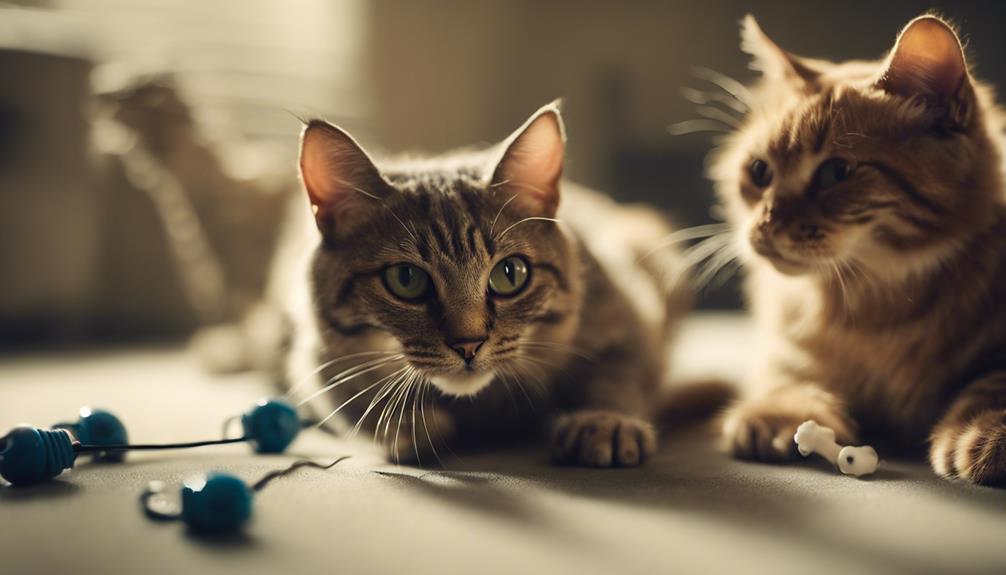
When reintroducing cats after a fight, engaging in play therapy can be a powerful tool to promote positive interactions.
Play serves as a bonding mechanism, fostering a sense of companionship and shared activities between the cats.
Encouraging playful interactions can help rebuild trust and create a harmonious environment for the cats to coexist peacefully.
Play as Bonding Tool
Engaging in play with your cats can be a powerful tool for strengthening their bond after a fight. Cats, like humans, can benefit greatly from interactive games and playful distractions.
Here are four ways to use play as a bonding tool:
- Rotate Toys: Introduce new toys or rotate their existing ones to keep playtime exciting and engaging.
- Set Aside Playtime: Dedicate specific times each day for interactive play sessions to create a routine that your cats can look forward to.
- Use Treats: Incorporate treats into play sessions to reinforce positive behavior and create positive associations.
- Observe Preferences: Pay attention to each cat's preferences during play to cater to their individual needs and personalities.
To enhance the bond between your cats and promote harmony after a fight, consider involving them in shared activities such as engaging in play therapy. Interactive toys can encourage collaboration between your feline companions, allowing them to interact positively and redirect any lingering tension.
Introducing joint feeding sessions can also aid in team building, as cats often associate positive experiences like eating together with bonding. By engaging in these shared activities, your cats can learn to associate each other's presence with fun and positive interactions, helping to rebuild their relationship and foster a sense of camaraderie.
Remember to supervise these activities initially to ensure a smooth and enjoyable experience for both your cats.
Monitoring and Supervising Interactions
Properly monitoring and supervising interactions between cats is crucial in the process of socializing them after a fight. Understanding body language cues and employing effective supervision techniques can help create a safe environment for your cats to interact positively. Here are some practical tips for monitoring and supervising interactions:
- Observe Body Language: Watch for signs of tension, fear, or aggression in your cats' body language to intervene before a situation escalates.
- Use Behavior Redirection: If you notice any negative behavior, redirect their focus by using toys or treats to shift their attention to something positive.
- Implement Playtime Monitoring: During play sessions, keep a close eye on their interactions to ensure they remain playful and not aggressive.
- Create Safe Spaces: Provide separate areas where each cat can retreat to if they feel overwhelmed, ensuring they've their own space to decompress.
Seeking Professional Help if Needed
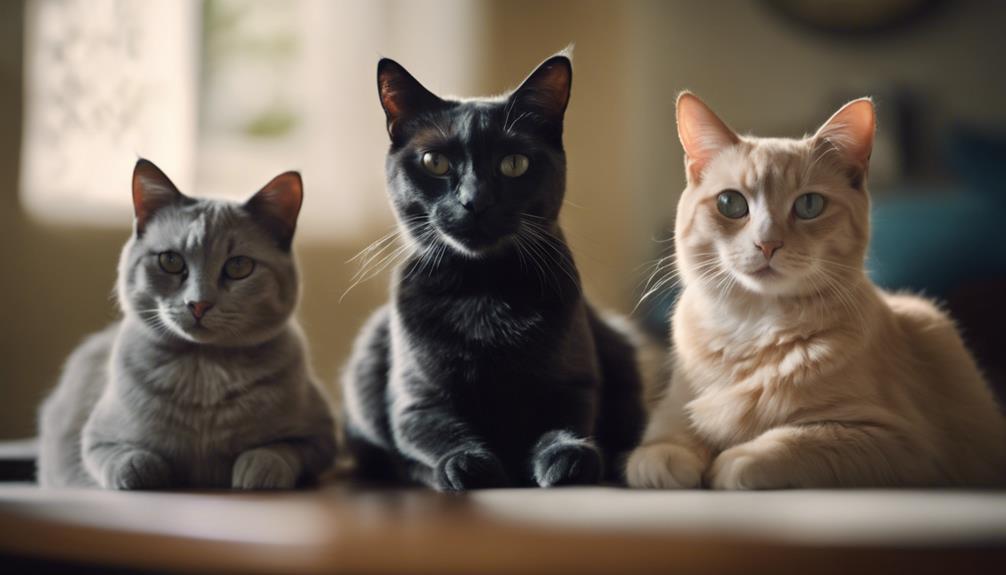
If you find that your efforts to socialize your cats after a fight aren't yielding positive results, seeking professional help can provide valuable guidance and support. Behavior therapy from qualified professionals can offer insights into the root causes of your cats' conflicts and provide tailored strategies to help them get along better. Cat behaviorists, trained in understanding feline behavior, can assess the situation objectively and recommend specific techniques to improve their relationship.
Professional help can be particularly beneficial when dealing with persistent aggression, fear, or anxiety between your cats. These experts can observe the interactions between your cats, analyze their body language, and identify triggers that may be exacerbating their conflicts. By addressing these underlying issues through behavior therapy, cat behaviorists can help create a more harmonious environment for your feline companions.
Frequently Asked Questions
Can Cats Hold Grudges Against Each Other After a Fight?
Cats can hold grudges against each other after a fight. This behavior is rooted in their animal psychology and territorial instincts. Understanding cat behavior is crucial in helping them socialize peacefully and resolve conflicts.
How Long Should You Wait Before Attempting to Reintroduce Cats After a Fight?
When considering the reintroduction timeline for cats after a fight, it's essential to prioritize patience and gradual steps. Implementing behavior modification techniques can aid in fostering positive interactions between the feline companions.
Can Cats Ever Fully Trust Each Other Again After a Fight?
Rebuilding trust between cats after a fight is possible but requires time, patience, and consistent effort. Establishing clear boundaries, providing separate spaces, and positive reinforcement can help them learn to coexist peacefully and even form a bond again.
Are There Any Specific Body Language Cues to Look Out for During Reintroduction That Indicate Progress?
Understanding emotions and body language is crucial when reintroducing cats after a fight. Look for communication and progress indicators like relaxed body postures, slow blinking, and mutual grooming. These cues indicate positive interactions and a step towards reconciliation.
How Do You Prevent Future Conflicts Between Cats Once They Have Been Socialized After a Fight?
To prevent future conflicts between cats after socializing post-fight, behavior modification techniques can be used. Positive reinforcement for desired behaviors helps create harmony. Consistent monitoring and addressing triggers can also help maintain peace between the feline companions.











